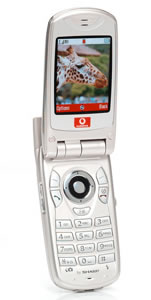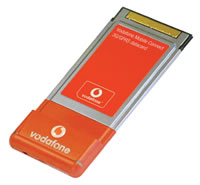It being Friday and we thought we would bring you a light-hearted piece.
UK cable company, Telewest, has suggested that they may release a computer add-on that generates aromas that can be controlled software. Sound like an urban myth/joke, but it is not without precedent. The first time a computer-controlled device was suggest was in 1999 by a start-up called DigiScent. Prior to that it was on the grander scale of whole cinemas, when in the last 50’s two similar ideas, AromaRama and Smell-O-Vision, were introduced to US cinemagoers.
AromaRama used the theatres ventilation system to get their scents out and Smell-O-Vision far more expensive approach was to place units under each cinema seat.
DigiScent was a serious, scientific approach to the subject that was started by two Stanford graduates that had made some serious fortunes from software for genetic databases.
One of the founders, Joel Lloyd Bellenson looked into previous scientific research around the subject to discover how humans perceived smells. His explanation was detailed in an article by Wired at the time.
“The explanation for this proved relatively simple. When odour molecules drift into the nose, each of them binds with a particular protein on the surface of a neuron. There are about 1,000 odour-matching proteins, each with a slightly different configuration, scattered across a human’s 10 million odour-detecting neurons. (By comparison, a mouse has about 1 million neurons of this type, while a pig boasts 100 million.) When the shape of an odour molecule matches the shape of a protein, the molecules lock together, triggering the neuron, which sends a signal that the brain recognizes as a smell. DNA is relevant because its instructions – its genes – tell the body how to build the proteins that receive odour molecules and activate the neurons. ”
Calling on his previous software experience, Bellenson wrote software to simulate the binding of odour molecules with proteins. By using this he felt he could generate billions of odours simply by selecting different proportions of 100-200 “scent primaries.”
DigiScent’s business was to licence its software to the creators of other media, to synchronise aromas with them. Web pages would be able to trigger them, as would TV shows, video games and films. The scent generators would be plugged into the serial port and sit on the desk – Reekers, instead of speakers.
Like many ideas around 1999, sadly DigiScent is not around anymore. One possible reason for that could have been is the name they chose for their product – iSmell.
Telewest say they have tested the idea in their labs, calling email using the device ‘ScentMail’, or on a wider scale, ‘Aromanet’. They plan to bring out a domed device that plugs in to the serial port of a computer or set top box, that takes dispoable cartidges to generate the aromas. They say the intial range of smells will be around 60 by mixing the palette of 20 oringial aromas.
Appearing to be designed to get them a few column inches for their broadband service, it is not clear how serious Telewest are about it. When discussing the cost of the dome they are less than exact, ‘Hardware for a surf & sniff set up might cost around £250 for the basic equipment’. We are sure Telewest is not trying to create news during the time their managing director, Charles Burdick, has left the company to “pursue other opportunities.”
Telewest corny press release
Wired 1999 article on DigiScent
 Vodafone has beaten the rest of the market to be the first to bring a mega-pixel camera to Europe. In a further development of their relationship with Sharp, it will be Sharp GX30.
Vodafone has beaten the rest of the market to be the first to bring a mega-pixel camera to Europe. In a further development of their relationship with Sharp, it will be Sharp GX30. Akimbo Systems launched their television-via-Internet service yesterday at Demo2004. They are claiming the service will start with over 10,000 hours of video content, organised in to 50 categories, will be pulled from a
Akimbo Systems launched their television-via-Internet service yesterday at Demo2004. They are claiming the service will start with over 10,000 hours of video content, organised in to 50 categories, will be pulled from a  Vodafone have announced today that it will be starting its 3G service in Europe. Interestingly their first offering will be a data only service using the catchyly named Vodafone Mobile Connect 3G/GPRS data card, rather than a voice service. Slotting one of these into a laptop will provide data speed up to 384kbps.
Vodafone have announced today that it will be starting its 3G service in Europe. Interestingly their first offering will be a data only service using the catchyly named Vodafone Mobile Connect 3G/GPRS data card, rather than a voice service. Slotting one of these into a laptop will provide data speed up to 384kbps.